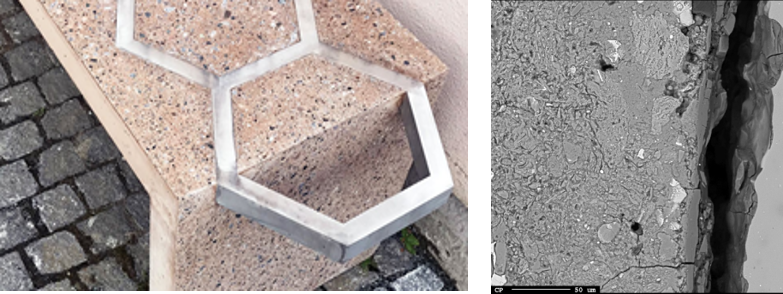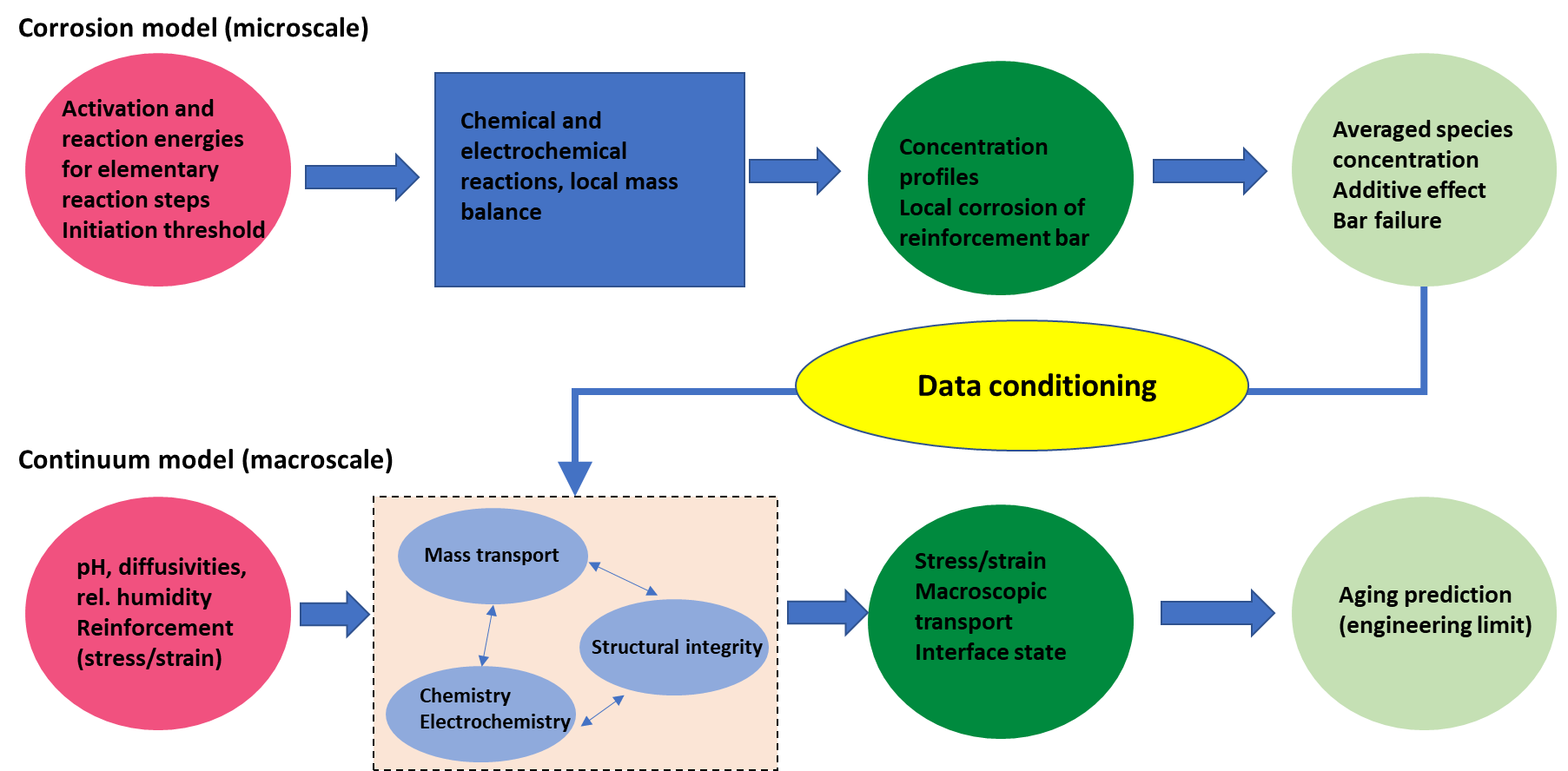Civil Engineering – Aluminium Reinforced Concrete (NHY, SINTEF, Hereon)
Aluminium reinforcement of standard concrete leads to strong corrosion. A new concrete mix, that is less alkaline, enables the avoidance of critical corrosion. A less energy intensive production with a resulting reduction of CO2 emissions enables slimmer lightweight concrete structures. Hence, the concrete mix has a longer lifespan and leads to less waste. The predicted reduced CO2 manufacturing coincides well with the European Green Deal roadmap, which promotes more investment in environmentally friendly technologies.

The KPIs of the use case are all related to the materials composition, microstructure, and processing. This success story will use corrosion models developed by Hereon and SINTEF in the frame of the LORCENIS project. Based on these models, Hereon will develop a corrosion model to be applied on the microstructural model of SINTEF for the specificities of the novel concrete mix and (secondary) aluminium interaction. The workflow will combine this local corrosion model with macroscopic mass diffusion (mainly Hydrogen), and part deformation as shown in the MODA workflow. Existing data combined with a few dedicated experiments will be used to determine material parameters for the reinforcement aluminium and the new concrete mix to validate the updated models. The workflow will be wrapped as an OpenModel App, providing a powerful tool for rapid development and deployment of innovative reinforced concrete with optimised lifetime and structural integrity with respect to a range of parameters, like composition, temperature, or salinity The OpenModel V&V services will be used to assess risks and errors, support experimental screening, and identify limitations of the models. The partners HYDRO, SINTEF and Hereon will be the leaders of this success story.

KPIs
- cost reduction
- improved in-service corrosion resistance
- improved structural integrity
